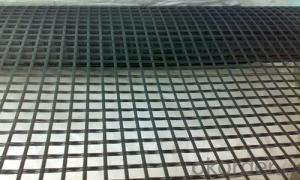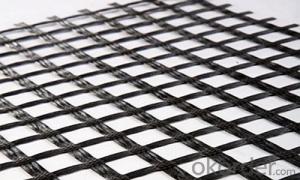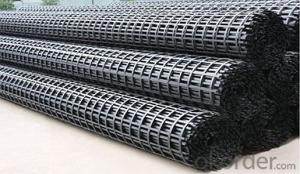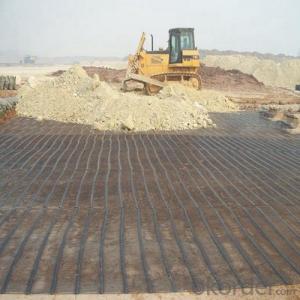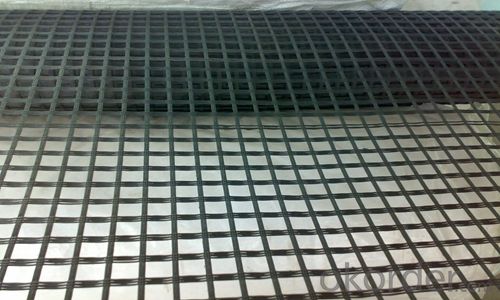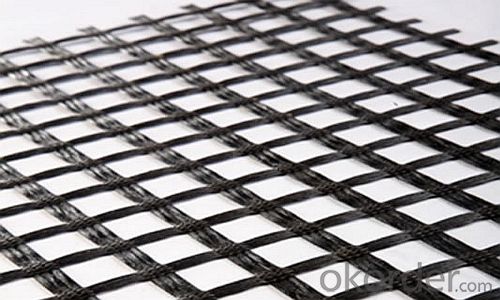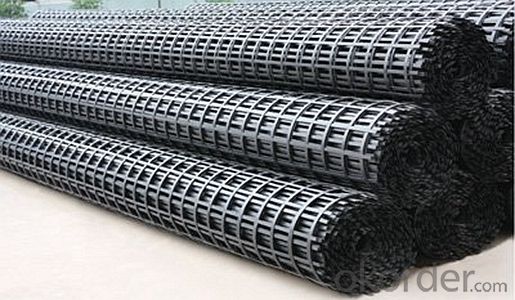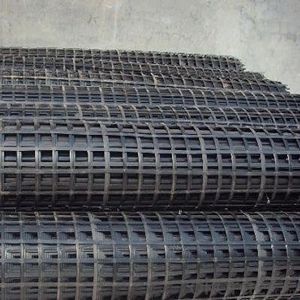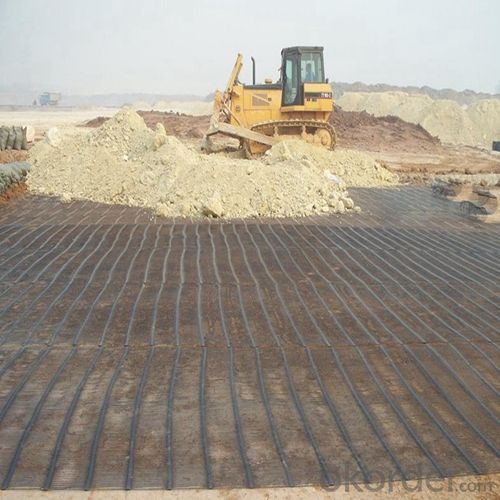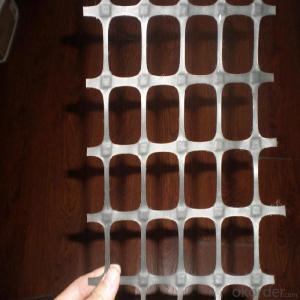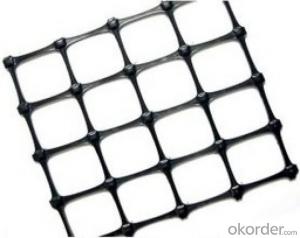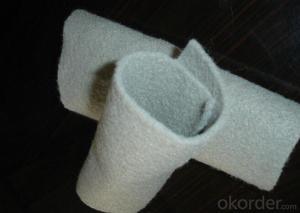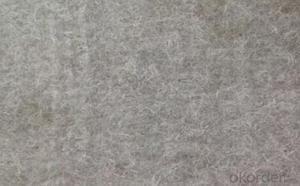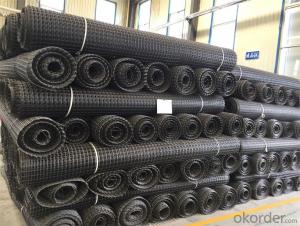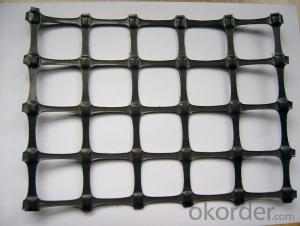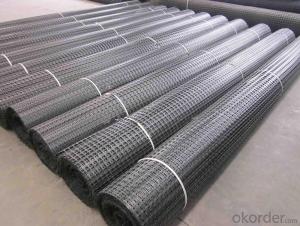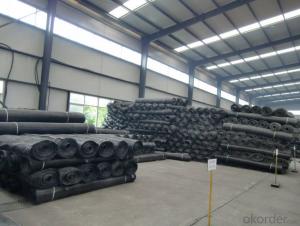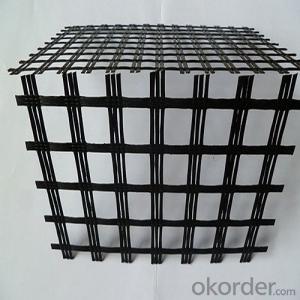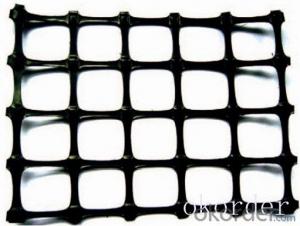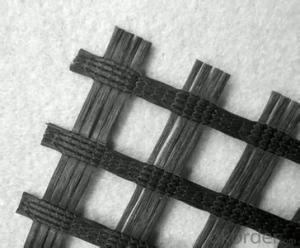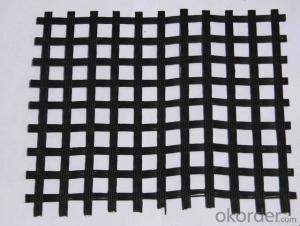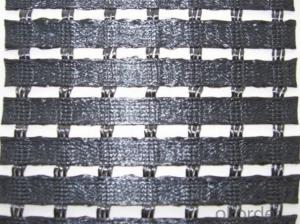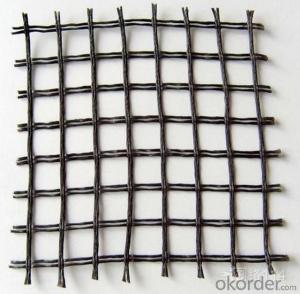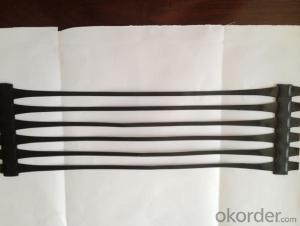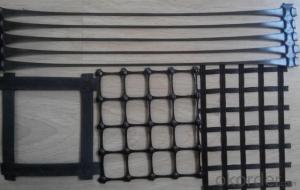Geocells for Erosion Control - Polypropylene Geogrid with Low Elongation and Good Toughness for Civil Engineering Construction
- Loading Port:
- China main port
- Payment Terms:
- TT OR LC
- Min Order Qty:
- 1000 m²
- Supply Capability:
- 1000000 m²/month
OKorder Service Pledge
OKorder Financial Service
You Might Also Like
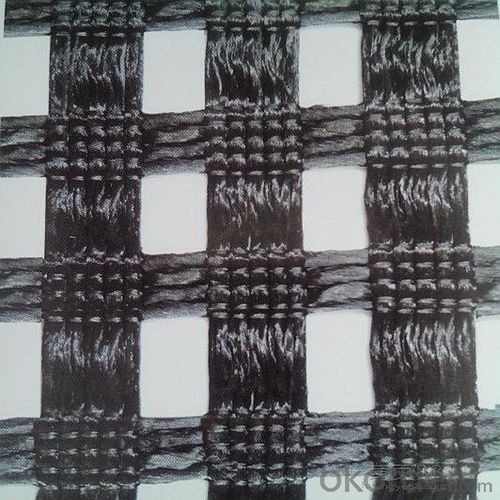
Introduction
Geogrid
Warp Knitted geogrid is made from high-strength fibers( polyester fiber or glass fiber), can also call high-strength fibers geogrid. This kind of use strength polymer or glass fiber as material, which woven by weaving machine to be with foursquare holes called warp knitted geogrid which arranged in parallel of latitude and longitude. According to customer demand, could composite geotextile or other kind of material.
Main applications:
Road bed reinforcement-it can effectively allocate and disperse load,improve the stability and load capacity of road bed and extend the useful lfe of road
It can be withstand greater alternating load
It can prevent road bed deformation and breakage caused by loss of road bed material
By increasing the self-load bearing capacity of backfill behind the retaining wall,it can reduce the load on retaining wall,save cost,extend its useful life and lower maintenance cost.
Combined with slope maintenance using shotcrete,it can not only save cost by 30% to 50% but also shorten construction duration by half
By adding geogrid in the road bed and bass course,it can reduce curve settlement,lessen traffic tracks,delay the occurrence of cracks by 3 to 9 times the normal period and reduce the thickness of structural course by 36%
It is suitable for all types of soil and all material is available locally
It is convenient in application and may significantly reduce construction cost.
Porducts Description
Type:
Geogrids
Place of Origin:
Anhui, China (Mainland)
Brand Name:
CMAX
Model Number:
Biaxial
Material:
Fiberglass
Tensile strength:
100kn
Roll Width:
3.95m
Roll length:
100 Meter
Our Service
Quality assurance
1.On a regular basis or as per your request,we entrust national testing agencies to conduct quality inspections
2. Strictly in accordance with the ISO9001-2008 international quality system standard,we monitor and manage the whole process throughout production,quality testing,and measurement to ensure product quality
3. For quality-related construction delay or substandard construction(except for damage or losses due to customer’s responsibility or irresistible natural disasters),we have refunding,replacement,and repair services.We will respond to customers’ feedbacks on quality issues within 24 hours.
Packaging & Shipping
Packing: PLASTIC FILM INSIDE, AND WOVEN BAG OUTSIDE
Shipping: About 15 days after receipt the deposit
FAQ:
Q: What kind of payments does jenor support?
A: T/T, L/C, Cash are accepted.
Q: Do you charge for the samples?
A: Accordeing to our company policy, the samples are free, we only charge the freight fee. And we will return the freight fee during the next order.
Q: Can you produce according to customers' design?
A: Sure, we are professional manufacturer, OEM and ODM are both welcome.
Q: Do you have other products?
A: Yes, please check the pictures:
- Q: What is the effect of soil type on geogrid performance?
- The effect of soil type on geogrid performance is significant. Different soil types have varying properties such as particle size, compaction, and stability, which directly influence the interaction between the soil and geogrid. Cohesive soils like clay may provide better interlocking with the geogrid, resulting in improved load-bearing capacity. On the other hand, granular soils like sand or gravel may offer less resistance to the geogrid. Therefore, understanding the soil type is crucial in determining the appropriate design and installation of geogrids to ensure optimal performance and long-term stability.
- Q: What is the effect of moisture on geogrid performance?
- Moisture can have both positive and negative effects on geogrid performance. On one hand, moisture can enhance the interlock between the geogrid and the surrounding soil, improving its overall stability and load-bearing capacity. This is particularly beneficial in clayey or cohesive soils where moisture helps to increase the soil's strength and reduce its potential for settlement. On the other hand, excessive moisture can lead to the loss of geogrid strength due to hydrolysis or chemical degradation, especially in certain polymer-based geogrids. Additionally, waterlogged conditions can increase the likelihood of soil erosion, reducing the effectiveness of the geogrid in retaining soil particles. Therefore, while some moisture is generally beneficial, proper drainage and moisture control are crucial factors to consider for optimal geogrid performance.
- Q: Geogrid width mean?
- Because the geogrid is packed, generally (1--6) * (50 or 100 m)
- Q: Can geogrids be used in ground stabilization for telecommunications infrastructure?
- Yes, geogrids can be used in ground stabilization for telecommunications infrastructure. Geogrids are commonly used to reinforce soil and provide stability to various types of infrastructure, including telecommunications installations. They can effectively distribute loads, prevent soil erosion, and enhance the overall strength and stability of the ground.
- Q: How do geogrids improve the stability of railway embankments?
- Geogrids improve the stability of railway embankments by providing reinforcement and increasing the load-bearing capacity of the soil. They are designed to distribute the applied loads more evenly, reducing the potential for settlement and soil movement. Additionally, geogrids increase the shear strength of the soil, preventing slope failure and erosion.
- Q: How do geogrids reinforce slopes?
- Geogrids reinforce slopes by providing additional strength and stability to the soil. They are placed within the soil mass to distribute and carry the load, reducing the risk of slope failure. The geogrid's interlocking structure enhances soil cohesion, increasing its resistance to erosion and sliding. This reinforcement mechanism helps reinforce the slope, preventing slope movement and maintaining its integrity.
- Q: Self adhesive fiberglass geogrid price 1m2 how much money
- This also depends on the specific specifications of the model
- Q: How do geogrids improve the performance of geosynthetic-reinforced slopes in liquefaction-prone areas?
- Geogrids improve the performance of geosynthetic-reinforced slopes in liquefaction-prone areas by providing additional stability and reinforcement to the soil. They function by distributing and transferring the load across a wider area, reducing the potential for soil liquefaction. Additionally, geogrids increase the shear strength of the soil, preventing slope failure and enhancing the overall stability of the structure.
- Q: How do geogrids help in reducing the risk of slope instability?
- Geogrids help in reducing the risk of slope instability by providing reinforcement to the soil or rock mass. They are typically made of high-strength polymer materials and are placed within the slope to increase its overall stability. Geogrids improve the shear strength of the soil, distribute the load more evenly, and prevent soil erosion. This reinforcement helps to counteract the forces acting on the slope, reducing the likelihood of slope failure or collapse.
- Q: How do geogrids improve the load distribution in pavements?
- Geogrids improve load distribution in pavements by providing a reinforcement layer that enhances the structural integrity of the pavement system. They distribute the load more evenly across the pavement surface, reducing stress and preventing the formation of cracks and deformations. Geogrids also enhance the overall strength and stability of the pavement, improving its lifespan and reducing maintenance costs.
Send your message to us
Geocells for Erosion Control - Polypropylene Geogrid with Low Elongation and Good Toughness for Civil Engineering Construction
- Loading Port:
- China main port
- Payment Terms:
- TT OR LC
- Min Order Qty:
- 1000 m²
- Supply Capability:
- 1000000 m²/month
OKorder Service Pledge
OKorder Financial Service
Similar products
Hot products
Hot Searches
Related keywords
